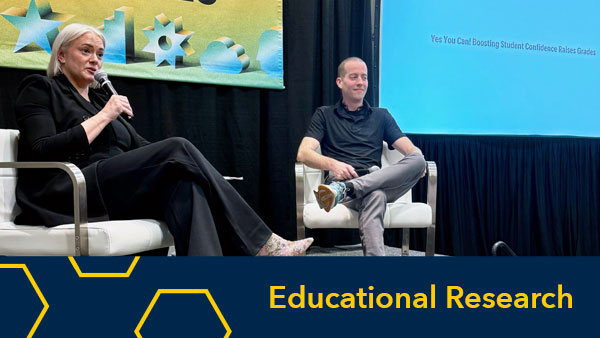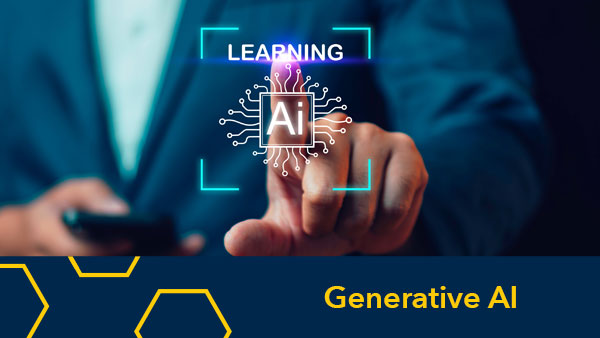Dave Malicke, Project Manager, Digital Learning Initiatives
Many of the initiatives at Academic Innovation result in online courses or digital learning resources that are made freely available to the global learning community. Some of our most wide-reaching contributions in this space come in the form of Massive Open Online Courses (MOOCs), which are available on digital platforms such as Coursera and edX. An important part of making these resources available is ensuring that we have the right to use all of the materials that are contained within them. This sounds obvious, but there is a gap between what an instructor has the right to use in a residential classroom setting and what an instructor has the right to use in an open and online course setting. Therefore, working with faculty members and campus partners, such as the MLibrary Copyright Office and the Medical School’s Learning Design and Publishing team, to understand and address potential copyright issues is an important part of our process.
This summer Raven Lanier, a rising second-year Michigan Law School student, joined Academic Innovation as our Copyright Fellow to help streamline our own internal copyright processes. As the Copyright Fellow, Raven works closely with our Project Managers, Instructional Media Specialists, and faculty members to lead, perform and document copyright clearance activities across all our learning initiatives. We believe the breadth of this position gives Raven a unique perspective on the initiatives and so we recently asked her to share her thoughts on copyright and how it plays a role in academic innovation.

Why is it important for universities and other institutions creating MOOCs to consider copyright and intellectual property when creating and publishing courses?
MOOCs are changing the concept of a classroom, and with that comes a change to how universities should view copyright and fair use. Right now when you think of material being used in a classroom, you think of a professor presenting a powerpoint lecture to a room of at most 100 students. Those students are all viewing the material at the same time and for the same amount of time.
On the other hand, MOOCs can have ten times that amount of students spread all across the globe. As more people are exposed to the content, the risk of a copyright claim increases exponentially, and that increased risk is something universities should try to avoid.
As the Academic Innovation Copyright Fellow, what are your responsibilities and how do they align with the above considerations?
My main responsibility is to screen external content used in our MOOCs to ensure that the University isn’t taking on any extreme copyright risks by using the material. My second responsibility is creating and maintaining thorough, thoughtful records as to why we’ve made the copyright decisions that we’ve made. That way if there is an issue, we have the records to quickly and efficiently explain why we’re in the right.
Throughout the summer have you found, created, or used any resources or tools that were helpful for this work that you’d like to recommend? Why are these items helpful?
Yes! Academic Innovation partnered with the Mlibrary Copyright Office to produce a Copyright Guide and a series of lecture videos, both of which are very useful resources for general copyright information. For more specific information, I like the Open.Michigan Casebook, which gives examples of different media and how each should be considered when making copyright decisions. And if you’re looking for information on the public domain, Cornell has a great guide explaining how and when material enters the public domain.
Any advice you’d like to give to others that are thinking about copyright and intellectual property in the open online learning landscape?
Use creative commons licensed material. Not only does it give you access to what is probably millions of photos and videos, but it also helps build the creative commons community. That, in turn, encourages more people to license their materials under creative commons, giving educators more material to work with while the authors gain more exposure for their work. And best of all, the universities don’t have to worry about getting permission from authors or doing a fair use analysis. It’s a win-win for everyone involved.
How does the use of creative commons material, for example stock photos, used in MOOCs help ensure our courses are inclusive and relatable to audiences around the world?
The good thing about creative commons material is that it is created by authors anywhere in the world. Anyone with access to a camera and the internet can upload pictures through online portals such as Flickr, which will then prompt them to allow creative commons licensing on their work. Using these resources definitely broadens the range of photographs we can use because we don’t have to worry about a stock photo site using the same five models in every photo. Creative commons gives us access to pictures of people of all socioeconomic backgrounds and races, created by people of all socioeconomic backgrounds and races. It’s really a fantastic thing.
How do you see this type of role growing or evolving?
Really it’s focused on keeping people informed as it continues to grow. Once a university has a good system in place to keep everything well documented, things change to ensuring everyone plays their part to keep things up to date. If the rest of the staff has learned what kind of issues there are, they can spot them in the beginning, which saves some time on the backend.
It’s also important to train faculty on basic copyright principles since they are the ones picking out the external content. Just doing something as simple as directing the faculty to the creative commons search engine can save a lot of time, resulting in a more efficient work process.
How has this experience contributed to your personal career goals?
I came into this position thinking that I would like to do copyright work for a living, and after the summer my thoughts definitely haven’t changed. I’m excited to talk to potential employers about what I’ve spent my summer building here. Overall, the experience has been a great foundation for my future legal career.


